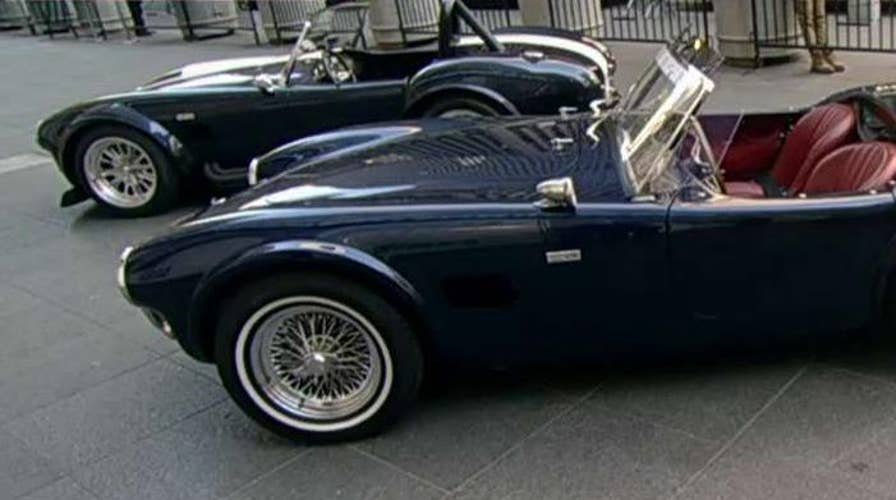Classic car fans can now buy replicas of their favorite models
Fox News automotive editor Gary Gastelu discusses the replica classic cars used in the movie 'Ford v. Ferrari.'
It’s a blast (of air) from the past.

(Gordon Murray Automotive)
The T.50 supercar was created to be the ultimate ‘analog’ supercar before everything goes completely electric and computer-controlled. The $2.6 million coupe is the brainchild of McLaren F1 designer Gordon Murray and features a carbon fiber chassis that weighs barely more than a ton, a 650-700 hp naturally-aspirated V12 engine and six-speed manual transmission. It also has three-across seating like the F1, with the driver in the middle, and something from Murray’s days of designing actual Formula One cars.

(Gordon Murray Automotive)
The T.50 is equipped with a fan that pulls air from underneath the car to both cool it and create a more efficient ‘ground effect’ that generates tremendous downforce without adding to aerodynamic drag.

(Bernard Cahier/Getty Images)
Gordon used a similar system on the 1978 Brabham BT46B that Nikki Lauda drove to a dominant 34-second victory in the season-opening Swedish Grand Prix. Fearing a backlash from its competitors, team owner Bernie Ecclestone decided not to race it again, despite its legality under the series rules.

Pressure plots show the difference in airflow when the fan is off (top) and on (bottom). (Gordon Murray Automotive)
Murray said he’s always wanted to employ the technology on a road car, however, and has further developed the for the T.50, where it helps direct the air over a more aggressively-shaped underbody diffuser than a passive design would allow.
The 4.0-liter V12 has a neat trick of its own. According to Car & Driver it will have a high torque setting that tops out at an already screaming 9,500 rpm and an even more aggressive mode that redlines at a racing car-like 12,100 rpm.
The T.50 is being developed in collaboration with the Racing Point Formula One team and is still two years away from production. Murray has so far released just one image of the car ahead of its full reveal next May. Performance targets haven’t been announced, but seeing as how it’s lighter and more powerful than the 240 mph F1, the classic’s position as the fastest naturally-aspirated production car may be in jeopardy.
